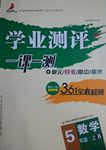题目内容
. -----_______ you write so well?
-----By reading and keeping diaries every day.
A. How is it B. What is it C. How is it that D What is it that
C
【解析】略

 学业测评一课一测系列答案
学业测评一课一测系列答案The lights dimmed,the musical hall grew quiet and out walked the conductor (指挥) shiny and white and 4 feet and 3 inches tall.
ASIMO, a robot designed by Honda Motor Co., met its latest challenge Tuesday evening: Conducting the Detroit Symphony (底特律交响乐团), in a performance of “The Impossible Dream” from “Man of La Mancha”.
“Hello, everyone,” ASIMO said to the audience in a childlike voice, then waved to the orchestra. As it conducted, it perfectly mimicked (模仿) the actions of a conductor,
nodding its head at various sections and gesturing with one or both hands. ASIMO took a final bow to excited shouts from the audience. Later, cellist Yo-Yo Ma joined ASIMO onstage to receive an award for his efforts in music education.
Honda spokeswoman Alicia Jones says it is the first time ASIMO has conducted an orchestra, and it may be the first time any robot has conducted a live performance. But ASIMO has its limits. ASIMO's engineers programmed the robot to mimic Charles Burke, the Detroit Symphony's education director, as he conducted the piece in front of a pianist about six months ago. But it can't respond to the musicians.
“It's not a communicative device. It simply is programmed to do a set of gestures,” said Leonard Slatkin, the orchestra's musical director. “If the orchestra decides to go faster, there's nothing the robot can do about it. Hopefully, I keep that under control.”
But several musicians also said ASIMO was more realistic than they expected. “The movements are still a little stiff (僵硬的), but very humanlike, much better than I thought,” Hutchinson said.
1.What's the audience's response to ASIMO's performance?
|
A.Disappointed. |
B.Moved. |
|
C.Excited. |
D.Astonished. |
2.Whose conducting was ASIMO made to copy?
|
A.Yo-Yo Ma's. |
B.Charles Burke's. |
|
C.Leonard Slatkin's. |
D.Alicia Jones's. |
3.We can learn from the passage that ASIMO ________.
|
A.was designed and trained by Yo-Yo Ma |
|
B.can communicate with the audience freely |
|
C.only performs according to the designed programs |
|
D.can change its conducting style freely |
4.What would be the best title for this passage?
|
A.Detroit Symphony gives a good performance |
|
B.Honda robot conducts Detroit Symphony |
|
C.“The Impossible Dream” from Detroit Symphony |
|
D.Cooperation between Honda and Detroit Symphony |